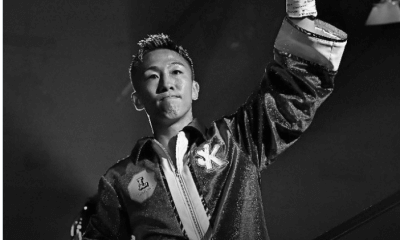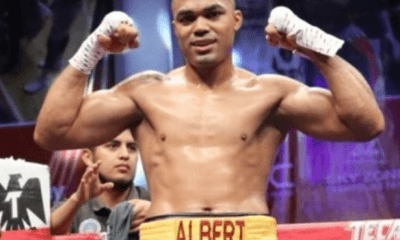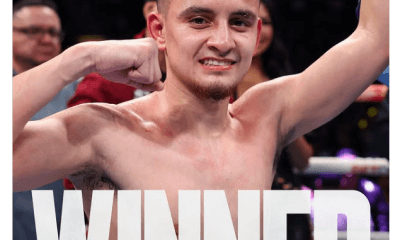Featured Articles
Ten Notable Boxers From Nebraska Not Named Terence Crawford
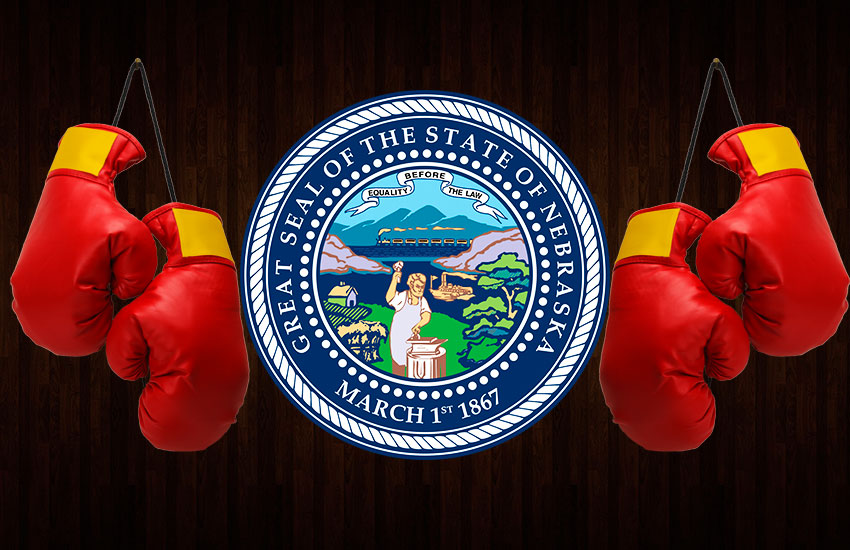
Terence Crawford meets Namibia’s Julius Indongo at the Pinnacle Bank Arena in Lincoln, Nebraska on July 19th on ESPN. At stake are all the meaningful belts in the 140-pound division and for Crawford something more – a chance to cement his status as one of the top pound-for-pound fighters on the planet.
Regardless of whether he wins or loses or what he accomplishes in the next few years, Omaha’s Crawford will reign supreme as the best boxer to emerge from the state of Nebraska. Granted, there isn’t a whole lot of competition. The Cornhusker State, historically rural, lacks the demographic components one associates with a high incidence of prizefighters. However, there have been some very solid practitioners of the manly art with Nebraska ties and with Crawford riding so high, now would seem to be a good time to excavate them from the dustbin of history and acknowledge them.
Here are ten notable boxers who sprung from the soil of Nebraska. They are listed in order of notability, needless to say a subjective exercise.
Ace Hudkins, Valparaiso (68-20-13, 25 KOs)
Before Terence Crawford arrived on the scene, Ace Hudkins was unimpeachably the best boxer spawned in the Cornhusker State.
Born in Valparaiso, Hudkins made his pro debut in Lincoln in 1922 at age 16 and fought all over Nebraska during his tenderfoot days, appearing in such burgs as Alliance, Bridgeport, Central City, McCook, Tecumseh, and Wahoo. Twelve bouts into his pro career his record stood at 3-3-6, hardly the template of a man who would go on to become one of the most celebrated boxers of his era. But Hudkins got better as the competition got stiffer and became a big box office attraction in New York and Los Angeles.
Paul Gallico, one of America’s most well-known sportswriters, about used up all the adjectives in his knapsack when he wrote that Hudkins was “tough, hard, mean, cantankerous, combative, fast, courageous and filled at all times with bitter and flaming lust for battle.” He might have added that the Nebraska Wildcat, as he was dubbed, wasn’t averse to bending the Queensberry rules.
In 1928, Hudkins challenged middleweight champion Mickey Walker at Comiskey Park, the home of the Chicago White Sox. Walker, who would be inducted into the International Boxing Hall of Fame with the inaugural class of 1990, won a split decision, but the consensus was that Hudkins was robbed. The multitude, which watched the fight in a driving rain, booed loudly when the verdict was announced. The rematch the next year in Los Angeles, which Walker won fairly, set a California record for gate receipts that stood for eighteen years.
Hudkins, who reportedly retired a millionaire, invested his ring earnings wisely. With several of his brothers he ran a thriving California company that leased horses and buckboards and such to producers of movie and TV westerns. He died in 1973 in Hollywood at age sixty-seven after a long battle with Parkinson’s disease.
Ed “Bearcat” Wright (70-24-19, 42 KOs)
Born in 1897 in Brazoria, Texas, Wright represented Omaha throughout a career that lasted from 1919 to 1936. While still a raw novice he had four fights with venerable Sam Langford, the legendary Boston Tar Baby. There was an extenuating circumstance. Nebraska’s ban on interracial matches wasn’t repealed until 1923.
Wright likely had many more fights than those which have been documented. And don’t be fooled by his record. In his day, men of his hue had to “do business” to put food on the table. He was stopped in four rounds by future heavyweight champion Primo Carnera at Omaha’s minor league baseball park in 1932, but the outcome was almost certainly prearranged.
Wright had 30 fights in Nebraska rings and fought three other former or future world champions (Jack Johnson, Mickey Walker, and Max Baer). His son, also known as Bearcat Wright, was 8-0 as a pro boxer and had numerous regional and tag team titles bestowed upon him as a professional wrestler.
Luther McCarty (19-4-2, 15 KOs)
The White Hope Era paralleled the heavyweight title reign of Jack Johnson which lasted from Dec. 26, 1908 to July 4, 1915. The Caucasian hopefuls that tumbled out of the chute were a motley lot, but McCarty was legit.
Depending on the source, McCarty was born on a farm 30 miles southwest of Lincoln, on a ranch near McCook, or in a hollow somewhere in Hitchcock County. We’ll take it on faith that he was actually born in Nebraska and had an emotional tie to the state.
It appears that McCarty was left to his own whiles at a very young age, whereupon he bummed around the country taking odd jobs while sating his wanderlust. He was in his late teens when he came to the fore in Los Angeles. De Witt Van Court, one of America’s foremost boxing authorities, asserted that he showed considerably more promise than former champions Jim Corbett and Jim Jeffries at the same age.
McCarty died in the ring in 1913 at age twenty-one in Calgary, Alberta, in the first defense of his White Heavyweight Title. The punch that felled him didn’t appear to pack much force, but it fractured his neck. He never fought in Nebraska but engaged in 4-round exhibitions with his traveling foil in opera houses in Lincoln and Omaha.
Ron Stander (38-21-3, 29 KOs)
During his fighting days, Stander hung his hat across the river from Omaha in Council Bluffs, Iowa; hence his nickname, the Bluffs Butcher. But Stander trained in Omaha, had twenty-six fights in Omaha, and settled in Omaha after leaving the sport.
In his 10th pro fight Stander knocked out Earnie Shavers, in hindsight a monster upset as Shavers came to be recognized as one of the hardest punchers in the history of the heavyweight division.
Stander’s record stood at 23-1-1 when he challenged Smokin’ Joe Frazier for the world heavyweight title at the Omaha Civic Auditorium in 1972 in what arguably ranks as the biggest single day non-football sporting event in the history of the Cornhusker State. He lasted only four rounds, but went out on his shield.
Art Hernandez, Sidney (46-20-2, 13 KOs)
The second oldest of the four fighting Hernandez brothers, the late Art Hernandez won five Nebraska Golden Gloves titles before turning pro in 1961. The former Sidney, Nebraska schoolboy had twenty fights in Omaha rings and fought extensively overseas, including five trips to France.
In 1964, Art Hernandez boxed legendary (albeit long-in-the-tooth) Sugar Ray Robinson to a draw at the Omaha Civic Auditorium. In 1969, he came out on the short end of a fight with former five-time world champion Emile Griffith, losing a split decision.
In retirement, Art Hernandez was the chief of security at Omaha’s Douglas County Hospital.
Ferd Hernandez, Sidney (35-10-4, 7 KOs)
The oldest of the brothers, Ferdinand “Ferd” Hernandez won the National Golden Gloves welterweight title in 1960 as a member of the Omaha team that won the team title over the favored Chicago contingent.
Ferd had three of his first five pro fights in Omaha before being lured away by the siren song of Las Vegas. In 1965 he won a 10-round decision over Sugar Ray Robinson. Late in his career he went the distance with future Hall of Famers Nino Benvenuti and Luis Rodriguez.
In retirement, Hernandez became a world-class referee. He refereed four world title fights including the 1975 bout between Muhammad Ali and Ron Lyle. He died in 1996 at his brother Art’s home in Omaha at age fifty-five.
(Note: Dale Hernandez, the youngest of the fighting Hernandez brothers, had the most natural talent. Unlike his brothers, he could knock a man out with one punch. He isn’t included here because he was born and raised in Pierre, South Dakota.)
Carl Vinciquerra, Omaha (45-5-5, 25 KOs)
Vinciquerra took a leave from Creighton University where he was the starting fullback on the varsity football team to pursue his dream of Olympic glory. He represented the U.S. in the light heavyweight division at the 1936 Berlin games after winning a National Golden Gloves title.
Vinciquerra had most of his early fights in Chicago but had 16 fights in Omaha rings where he scored three wins over his former Creighton teammate and amateur rival Paul Hartnek.
Vince Foster, Omaha (30-4-1, 19 KOs)
A 1946 Midwest Golden Gloves champion, Foster, a welterweight, made a big splash in his debut as a Madison Square Garden headliner, overwhelming rugged 54-fight veteran Tony Pellone en route to a seventh round stoppage. “It was the most exciting victory scored in the Garden since Sandy Saddler’s knockout of Willie Pep in October (of the previous year),” said the ringside correspondent for the Associated Press.
Half Irish and half Native American, Foster was here and gone in a flash. In his next outing at New York City’s temple of fistiana, he was knocked out in the opening round by future world title challenger Charley Fusari. Two months later, he died when his car plowed into the back of a cattle truck in Pipestone, South Dakota, where he was visiting his two half-siblings who were enrolled in the Santee Sioux Indian boarding school. Akin to the ill-fated Luther McCarty, he was only 21 years of age.
Glen Lee, Edison (56-20-5, 22 KOs)
Born in the flyspeck village of Edison, not far from Grand Island which he eventually called home, Lee, a welterweight, made his pro debut in Omaha in 1933 and had thirteen of his first twenty-one fights in Nebraska rings before heading west where he became a popular attraction at LA’s Olympic Auditorium.
His career was winding down when he fought a rubber match with the ultra-talented Ceferino Garcia on Garcia’s home turf in Manila. Lee was TKOed in the 13th frame in what is recognized as the first world title fight ever held in the Philippines.
Lee’s younger brother Don Lee was a welterweight contender during the 1940s.
Morrie Schlaifer, Omaha, (49-40-6, 25 KOs)
Before he regressed into a trial horse, Schlaifer was one rough customer. Active from 1920 through 1927, he fought all the top welterweights of his day. His best win came in 1925 when he stopped future welterweight champion Pete Latzo in the third round on Latzo’s turf in Wilkes-Barre, Pennsylvania. (In a pro career that numbered 147 fights, Latzo was stopped only twice.)
Schlaifer holds the record for most fights in Nebraska (42). Thirty-nine of those fights were in Omaha.
NOTE: Records include newspaper decisions.
Honorable Mention: JOHNNY SUDENBERG – He lost his last 13 documented fights, plunging his ledger into the red, but the great Jack Dempsey, on his way up the ladder, found the Omaha Swede a tough nut to crack. They fought three times in bouts staged in Nevada mining camps. Dempsey won the last but the first two, both vicious encounters, were recorded as draws.
Honorable Mention: PERRY “KID” GRAVES – Hailing from Red Bluff in Cass County, near Plattsmouth, Graves laid claim to the world welterweight title in 1914 with a second round stoppage of five-time rival Johnny “Kid” Alberts (aka Albert Miskowitz) in Brooklyn. He continued fighting for 11 more years but never had another bout packaged as a title fight – such were the vagaries of his times.
Disqualified: MAX BAER — A murderous puncher and briefly the world heavyweight champion, the “Livermore Larruper” was born in Omaha but grew up on a ranch in Livermore, California, near Stockton, where he made his pro debut. He never fought in Nebraska.
Special Citation: BRUCE “THE MOUSE” STRAUSS — If Strauss had a business card, it likely read “have gloves, will travel.” During his 14-year career (1976-1989) the affable leather-pusher, born and bred in Omaha, fought in twenty-three states, five Canadian provinces, and eight foreign countries. Dubbed the Prince of Palookas by the celebrated sportswriter Rick Reilly, Strauss appeared on the David Letterman Show where he recounted the time that he was knocked out twice in one night, the second under the pretense of being his twin brother.
Check out more boxing news on video at The Boxing Channel.
-

 Featured Articles2 weeks ago
Featured Articles2 weeks agoThe Hauser Report: Zayas-Garcia, Pacquiao, Usyk, and the NYSAC
-

 Featured Articles1 week ago
Featured Articles1 week agoOscar Duarte and Regis Prograis Prevail on an Action-Packed Fight Card in Chicago
-

 Featured Articles5 days ago
Featured Articles5 days agoThe Hauser Report: Cinematic and Literary Notes
-
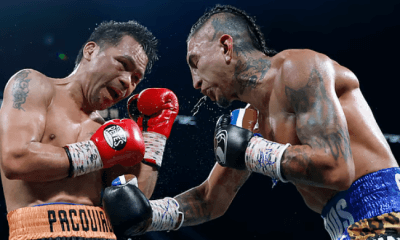
 Featured Articles3 weeks ago
Featured Articles3 weeks agoManny Pacquiao and Mario Barrios Fight to a Draw; Fundora stops Tim Tszyu
-
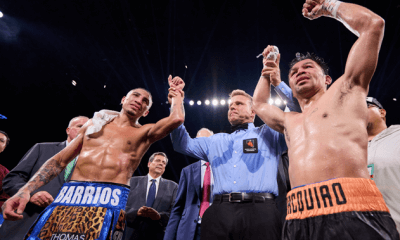
 Featured Articles3 weeks ago
Featured Articles3 weeks agoArne’s Almanac: Pacquiao-Barrios Redux
-

 Featured Articles2 weeks ago
Featured Articles2 weeks agoRemembering Dwight Muhammad Qawi (1953-2025) and his Triumphant Return to Prison
-
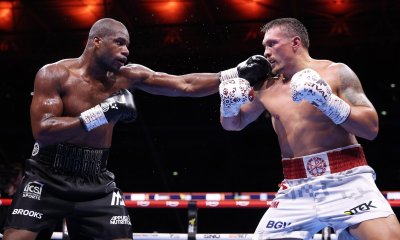
 Featured Articles3 weeks ago
Featured Articles3 weeks agoOleksandr Usyk Continues to Amaze; KOs Daniel Dubois in 5 One-Sided Rounds
-
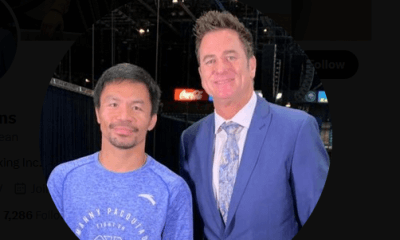
 Featured Articles4 weeks ago
Featured Articles4 weeks agoFrom the Boondocks to the Big Time, The Wild Saga of Manny Pacquiao’s Sidekick Sean Gibbons




